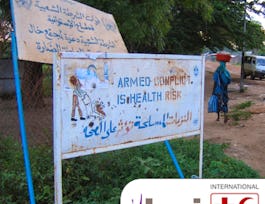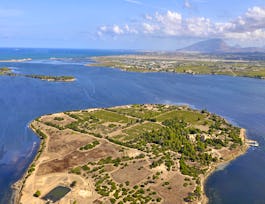This course will review the emergence of the modern Middle East from the fall of the Ottoman Empire, at the end of the First World War to the present. We will discuss the Ottoman legacy in the region and the Western imperial impact on the creation of the Arab state system. The course will review the rise and retreat of Arab nationalism, the problems of internal cohesion of the Arab states, issues of religion and state, and the evolution of Islamist politics. We will also focus on the evolution of the Arab-Israeli conflict and its impact on the region and will conclude with an in depth analysis of the “Arab Spring” by placing these contemporary revolutionary events in their historical context.



The Emergence of the Modern Middle East - Part I

Instructor: Professor Asher Susser
Sponsored by BIDAcademy
50,120 already enrolled
(1,138 reviews)
Details to know

Add to your LinkedIn profile
2 assignments
See how employees at top companies are mastering in-demand skills


Earn a career certificate
Add this credential to your LinkedIn profile, resume, or CV
Share it on social media and in your performance review

There are 4 modules in this course
In our first lesson, we will locate the Middle East in time and space. We will get to know the 19th-century Middle East, the structure of its society and economy as well as the dynamics of its politics. We will then look into the dramatic change that took place in the last quarter of the 18th century, that is the widening gap between Europe and the Middle East as we will dwell on the impact this change had on the future of the region. We will conclude our first lesson with a discussion on the "Eastern Question," which refers to the fate of the Ottoman Empire and the balance of power in Europe.
What's included
9 videos2 readings1 plugin
Our second lesson is a discussion on the forces of modernity and tradition in the Middle East. The filtering of European ideas into the Middle East engendered a process of reform in the region throughout much of the 19th century. We will analyse two centres of reform in this respect, namely the Ottoman Empire and Egypt. This analysis will take us next to the Islamic responses to the crisis of modernity as a result of the inherent tension between faith and secularism. We will see how various Islamic thinkers tried to find a compromise between these obvious tensions and at times went in more fundamentalist directions.
What's included
11 videos1 reading1 assignment
In lesson three, we will witness the rise of nationalism in the Middle East, as it became a much more acceptable idea in the late 19th and early 20th century among an intellectual, elitist, urban minority, who were the graduates of western-style schools (remember lesson two and the process of reform!). We will concentrate on the emergence and development of three nationalist movements; Turkish, Egyptian and Arab. Lastly, we will speak about the First World War and how it brought the end of the Ottoman Empire as well as the end of 400 years of Ottoman Turkish rule in the Arab countries. We will also see how the Middle East began to take its current shape following the First World War.
What's included
9 videos1 reading
In our fourth lesson, we will be speaking about the creation of the Middle East state system in accordance with British and French designs after the First World War. First, we will discuss Egypt and how its distinct historical development gave way to a unique liberal experiment in Egypt during the 1920s and 1930s and consequently to a steady shift toward Islam and Arab nationalism. Second, we will discuss the area of the Fertile Crescent in comparison to Egypt and the creation of British (Palestine, Trans-Jordan, Iraq) and French mandates (Syria, Greater Lebanon) in this region. Our attention will then shift to the non-Arab states. We will learn about the creation of the Republic of Turkey on the ruins of the Ottoman Empire and the sweeping process of modernising reform under Mustafa Kemal. Lastly, we will take a look at Iran, which was, like Turkey, not a new state created by the Great Powers but a country with a long history and cultural tradition. Our discussion on Iran will include an overview of its history from early 16th century onwards as well as the basic principles of the Shi'a which shaped greatly the political culture in Iran.
What's included
15 videos2 readings1 assignment1 plugin
Instructor

Offered by
Why people choose Coursera for their career




Learner reviews
1,138 reviews
- 5 stars
78.94%
- 4 stars
17.71%
- 3 stars
2.63%
- 2 stars
0.17%
- 1 star
0.52%
Showing 3 of 1138
Reviewed on Sep 1, 2018
Great course with lots of information. I only wish that it was slightly longer and had time to go into some areas in more depth, but looking forward to part 2.
Reviewed on Sep 7, 2017
A complete breakdown of the Middle Eastern States emergence from the Ottoman Empire's rule to the Mandates imposted by the European Powers post WW1.
Reviewed on Sep 10, 2016
I really like the professor and his narration, quite engaging and interesting course. The only suggestion I have is to improve the quizzes with more analytical rather than fact-based questions.
Recommended if you're interested in Arts and Humanities

Coursera Project Network

Princeton University

University of Manchester

Open new doors with Coursera Plus
Unlimited access to 10,000+ world-class courses, hands-on projects, and job-ready certificate programs - all included in your subscription
Advance your career with an online degree
Earn a degree from world-class universities - 100% online
Join over 3,400 global companies that choose Coursera for Business
Upskill your employees to excel in the digital economy



